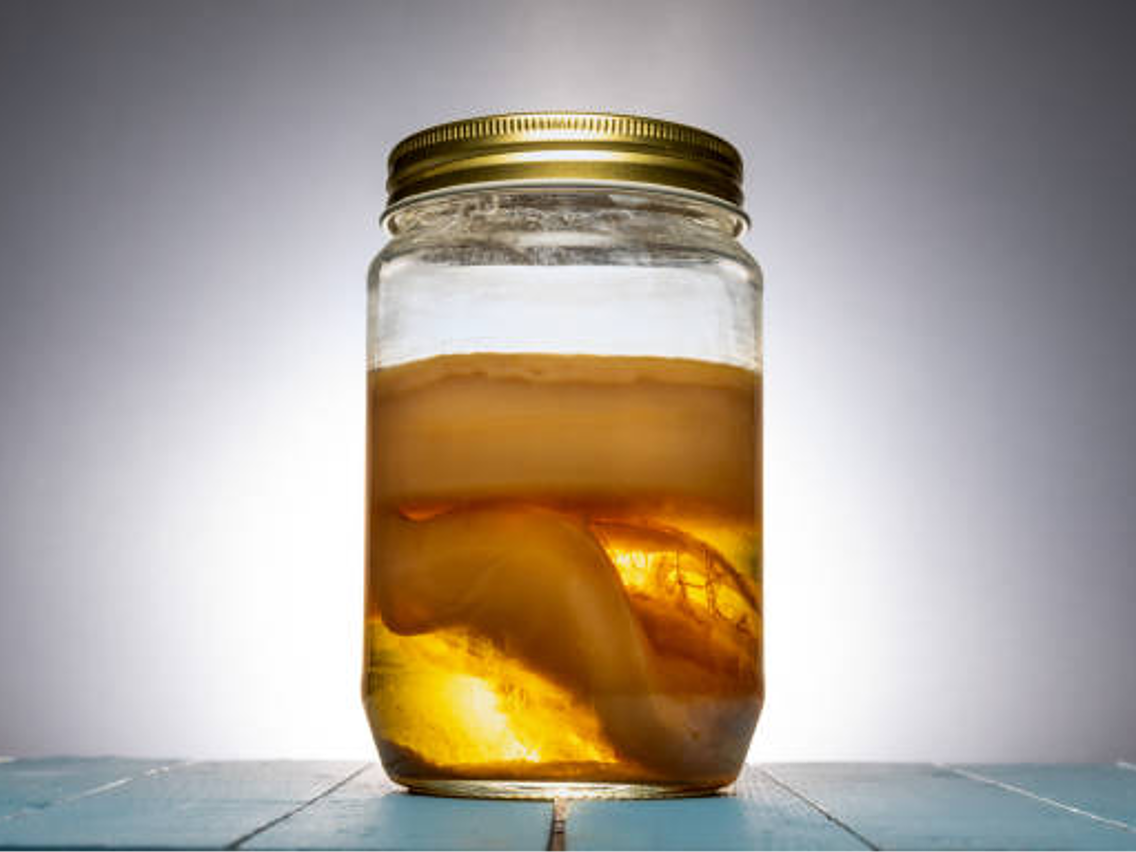Kombucha - Tea Fungus

Common Names: Kombucha, Tea Fungus, Kombu, Manchurian Mushroom, SCOBY (Symbiotic Culture of Bacteria and Yeast), Tea Mushroom, Japanese Mushroom, Russian Mushroom, Chinese Mushroom, Tea Kvass, International: Kombucha, German: Wunderpilz, Latin: Medusomyces gisevii, Origin: Manchuria, Global
Latin Name: ---
Origin: Asia
Short Introduction
Kombucha, also known as the tea fungus, is a symbiotic culture of bacteria and yeast. It is traditionally used to brew a sparkling, slightly tangy beverage prized for its refreshing flavor and wellness benefits. Commonly made by fermenting sweetened green or black tea, the drink's taste and color vary by tea type and fermentation time. Kombucha is appreciated both as a functional food and for its ability to support natural defenses and healthy digestion.
Detailed Description
Sparkling kombucha tea – nurture well-being and spirit in the family!
Origin
Kombucha, often called the tea fungus, originated in Asia and has been known since 220 BCE. In Central Europe, its popularity surged after World War I but waned due to misconceptions that the 'mushroom' would continue to grow in the body after drinking. In reality, this is a myth.
Botanical Information
Despite its name, kombucha is not a true fungus. It is a living, symbiotic culture of several types of bacteria and yeasts that thrive together in a nutrient-rich environment. Kombucha grows best in tea, where it thrives on the caffeine, theophylline, and theobromine found in traditional black and green teas, although it can also be cultivated in certain herbal teas. The culture, which resembles a lichen or jelly-like disc, multiplies at the surface of the tea infusion, constantly renewing itself by producing ‘daughter’ cultures. With proper care, kombucha can be cultivated indefinitely.
The resulting kombucha beverage is a fermented drink produced by combining the culture with sweetened green or black tea. The color depends on the type of tea used—darker and slightly reddish with black tea, or honey-golden if made with green tea. The taste varies with the length of fermentation, ranging from lightly sweet and fruity to tangy or even vinegar-like; the optimal flavor is individualized and can be determined by regular tasting throughout the process.
Usage / Dosage
Kombucha is widely enjoyed for its overall health-supporting effects, with countless testimonials to its benefits. It is reputed to support natural immunity and detoxify the body, making it popular in cleansing regimens to remove accumulated toxins. Some users find it helps reduce blood levels of alcohol and nicotine. Anecdotal reports also suggest benefits for asthma, allergies, and some skin conditions. Kombucha tea has also been used experimentally as a topical compress for burns and open wounds.
The beverage is said to promote digestive regularity, intestinal health, and a balanced gut microbiota; it may be recommended for those on weight-loss regimens as it is believed to stimulate metabolism and support healthy weight management. Kombucha may also help with normal sleep patterns and offer support during times of stress or insomnia. Athletes sometimes turn to kombucha as part of their hydration and recovery routines.
How to prepare kombucha tea:
- Brew 2–8g of loose-leaf black or green tea (ideally Darjeeling, Himalayan, or Ceylon) per 1 liter of water.
- Add 80g cane or beet sugar per 1 liter and stir to dissolve. Allow the tea to cool to approximately 30°C (86°F)—do not force-cool.
- Gently place the purchased kombucha culture (including a splash of existing kombucha tea) onto the cooled, sweetened tea.
- Cover the container with a breathable cloth or napkin to protect from contaminants while allowing air exchange.
- Ferment at 21–24°C (about 70–75°F) out of direct sunlight for 7 to 20 days, tasting periodically to find your preferred flavor.
- When ready, remove the culture (which may have grown to fit the shape of the vessel) and transfer it to a separate jar with a little finished tea for preservation. The beverage can then be filtered and bottled for consumption.
Storage & Tips: Always use glass or high-quality stainless steel containers for fermenting and storing kombucha; avoid aluminum. Never heat kombucha above 50°C (122°F) as this can compromise its beneficial qualities. With careful cultivation, your kombucha culture can produce new generations for ongoing use.
Recommended dosage: Drink 3 small glasses of kombucha per day. Start with 1 glass in the morning on an empty stomach (if you experience mild digestive discomfort at first, switch to drinking after meals). Drink the remaining 2 glasses before meals during the day.
